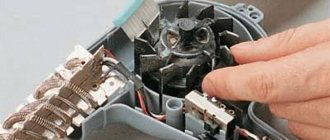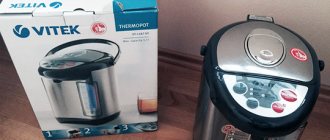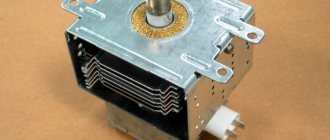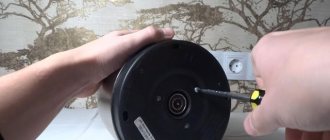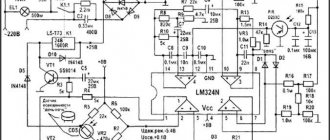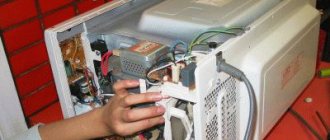Household appliances have become a part of our lives and have greatly simplified them. There are both pros and cons to this at the same time. On the one hand, household transactions have become much more convenient. On the other hand, if the refrigerator, washing machine or stove breaks down, most will not know what to do.
Problems can arise with any household appliance. The teapot is no exception. Cases are different. But one of the most common is that the kettle does not turn off when it boils. Let's figure out why.
Electric kettle
Kettle design
To deal with the breakdown, you need to understand the principle of operation of the equipment.
The design of the kettle is extremely simple. After pressing the power button, electricity is supplied to the heating elements. They are called heating elements, or tubular heating elements. The heating element is located either in a special stand or in the bottom of the device itself - it depends on the model.
The water gradually warms up. After crossing the threshold, hot steam begins to form. Since the lid is closed, the steam needs to escape somewhere. For this purpose, a channel is adapted that leads to the shutdown button. In front of the switch there is a bimetallic plate that acts on it. This mechanism disconnects the equipment from the network.
Device operation diagram
Principle of operation
To understand how to repair an electric kettle, you need to know its operating system. To heat the water, a special electrical device is built into the bottom. Depending on the manufacturer, its shape varies. For fastening, special bushings and metal screws are used, which are firmly fixed to a waterproof seal.
The shape of such protective elements is varied. This could be a washer, gasket, bushing. When this element breaks its seal, water begins to leak. To fix such a breakdown, you simply need to replace this component. They are sold in the store. To avoid mistakes, you will have to take the kettle with you or remove this element.
Before you repair an electric kettle, it is worth understanding the principle of operation. When water heats up, steam is formed - this is a natural process. It, in turn, exits through specially formed outlets. And in this process, the operating principle of the entire unit is important. Because if it approaches the biometric plate, then the toggle switch is automatically activated. The device turns off.
What's on the kettle:
- Indicator and button block. Thanks to this addition, you can know what the current water temperature is and create suitable working conditions.
- Unique water level sensor. It shows the level and is capable of transmitting data to the application.
- Two heaters. They are necessary for spot heating and full heating.
These are the features that every kettle has. Although today manufacturers, trying to occupy a larger part of the market, are coming up with other possibilities to make the operation of the unit more convenient. In addition, there is always a protective element. Its main task is to turn off the kettle when the water boils. It also triggers if, by mistake, the element was started without liquid. Thus, the manufacturer tries to protect users from accidents (for example, from fire of the device).
Statistics show that it is empty kettles that often end up being switched on. It was accidents that prompted manufacturers to create such additional conditions for the operation of the entire device. Therefore, modern kettles are considered to be completely safe.
Causes of failure
Now that the principle of operation is known, it is much easier to understand why the electric kettle stopped working and does not turn off on its own when it boils. There may be several reasons:
- The most common reason is that the lid is not closed, or is not closed tightly. Instead of steam moving through the channel, it will escape through the cracks to the outside. Because of this, the shutdown mechanism will not work.
- There is no filter or it is installed unevenly. Because of this, the lid does not fit very tightly to the edges. Gaps are formed through which steam escapes.
- If you don't take care of your kettle, scale will form over time. This will be immediately noticeable by the plaque inside.
- The steam outlet channel is clogged. This can happen in older models. In newer ones, the creators took this shortcoming into account.
- Breakage of the switch. Changes are mandatory without exception.
- Damage to the plate, which cuts off electricity when heated. Of course, in this case you can turn off the kettle manually. But it is still advisable to repair it to avoid fire or smoke.
- Contacts sticking. Simply wipe and clean the contacts with sandpaper to solve the problem.
Some of the reasons can be solved by prevention and proper care of the kettle. Descale, close the lid tightly, turn off the kettle during power surges and do not heat it many times in a row. For other faults, DIY repairs are possible. You just need to know what exactly to do.
How to choose an electric kettle for your home
Despite the apparent simplicity of the design, the electric kettle has a number of characteristics that should be taken into account when choosing this device. Let us highlight each characteristic in detail:
Electricity consumption. An electric kettle, despite the short frequency of operation, consumes a large amount of electrical energy. Therefore, it is worth paying attention to energy-saving models. Such kettles consume significantly less electricity and spend less time heating water. Energy-saving kettles can save about 50% of electricity compared to standard models. Naturally, such teapots are more expensive.
Availability of temperature control. This option is relevant for preparing some types of drinks. For coffee, the water should not be boiled - you need a temperature of 92-96 degrees. Some kettle models can also additionally maintain the temperature in the required range.
Electric kettle power. The rate at which water boils directly depends on the power of the heating element. Therefore, if you want to purchase a high-power electric kettle, evaluate the capabilities and condition of your electrical wiring. Optimal power is 1500 - 2000 W. It allows you to heat a full kettle in about 5 - 7 minutes. The main material of the kettle body can be plastic, steel, glass or ceramics. The best option in terms of price and quality is an electric kettle made of plastic. All materials are described in more detail above (in the “device” section), so when choosing, read their characteristics.
Ergonomic aspects. An important structural element of an electric kettle is the lid. It should open well and be of such a size that you can conveniently wash the kettle from the inside.
Type of heating element. The heating element in a kettle can be open (spiral like a boiler) or closed (built-in). An open spiral quickly becomes coated, which changes the taste of the water and, over time, the kettle heats the water more slowly. Closed heating elements (discs or hidden coils) heat water faster and form scale more slowly. It is also worth noting that the built-in heating element makes more noise.
Kettle volume. The kettle must be selected taking into account the number of people in the family. For 4 people, a volume of 1.5 liters will be enough. The optimal and universal option is an electric kettle with a volume of 1.5-1.7 liters.
Safety of use
In addition to the fact that most kettle models have automatic shutdown when boiling, an equally important function is protection against switching on (overheating) when there is no water in the kettle. To prevent boiling water from accidentally spilling and causing burns, the lid should snap tightly when closing and open only when the button is pressed.
Also at this point it is worth noting the fight against scale. And so that it does not fall into the cup along with the water, the kettle must be equipped with a filter (nylon or metal removable mesh).
Remote control. The possibility of remote access via specialized software (smartphone application) allows you to control the operation of the kettle while outside the kitchen or at home. Depending on the model of the electric kettle, through the application you can not only turn the water heating on or off, but also set the desired heating temperature, create an operating schedule, or find out the water level in the bowl.
How to fix a kettle yourself that won't turn off when it boils
First of all, the device must be inspected for visible damage. Are there any cracks or chips from which steam can escape? Is the lid tightly closed?
Open lid
If everything is in order on the outside, then you should look inside. Perhaps the filter is not inserted too tightly and is sticking out. Because of this, the lid does not close - this is one of the most common reasons.
Next you need to check if there is any scale underneath. If there is one, it makes sense to thoroughly rinse and clean the insides.
In older models, the steam channel may become clogged. Check the hole. It can be found on the side of the kettle handle. This problem shouldn’t arise in new models, but it wouldn’t hurt to check.
If you have examined all the visible parts, but there are no problems with them, then it is time to disassemble the kettle and get to the switch and bimetallic plate. To do this, you need to carefully unscrew all the retaining screws.
It is advisable to record the dismantling process on camera. This will make it easier to assemble the parts into place later.
- If the switch fails, it must be replaced. It is no longer possible to repair it yourself.
- If the contacts are stuck to each other or burnt, you will need sandpaper. It is necessary to carefully wipe each contact for several minutes. Then remove the scratches with thick felt and you're done!
Disassembled device
After fixing the problem, you need to reassemble the kettle. But it’s too early to include it online. Even if you assemble it according to the instructions, you can make a mistake.
To eliminate this possibility, you need to place a towel under the bottom and wait about half an hour. If the towel does not get wet during this time, then the kettle is assembled correctly. And even then it can be connected to the network without any problems.
Principle of operation
Despite the fact that there are many manufacturers of electric kettles, each of them has a completely similar electrical circuit. Differences can only be in small elements. For example, they are now improving electrical devices by installing a control system containing different timers.
But even all the innovative light bulbs and backlights do not make the internal structure more complex; it still remains extremely simple, so that even a beginner can understand the operation of the device.
All modern devices have two parts:
- stable stand with cord;
- product body containing a container and heating element.
The structure of an electric kettle
Electricity is supplied through a wire to the contacts of the device, which are located inside the stand. This is done to prevent a person from accidentally touching a current-carrying wire. Some contacts are located right on the bottom of the electric kettle stand.
When the kettle is on the stand, the terminals close during operation, as a result of which the electricity travels further through the wires to the thermal switch, which does its work in two modes:
- mechanical shutdown by pressing a button located on the body;
- Automatic shutdown after water boils.
Immediately after turning on the device, electricity penetrates the heating element. And the person sees that the light is on, which indicates that the kettle is working.
After the kettle reaches a boil, steam penetrates the bimetallic plate in the thermal switch, usually located near the lid where the two different metals come into contact with each other. When heated, one of the plates bends, which is why automatic shutdown occurs.
Operating principle of an electric kettle
Fire safety
Why is it worth paying special attention to equipment if it does not turn off on its own? The point is the risk of losing your property. And it's not just a teapot.
Pampered users are accustomed to the fact that almost all equipment works automatically. And many can put the kettle on to warm up and go to another room or leave the apartment altogether.
The water gradually begins to evaporate. Eventually, the process will reach the point where there is absolutely no water left in the equipment. And if the kettle simply breaks down, it will be a huge luck. After all, there is a risk of fire.
Therefore, in case of such a breakdown, you need to pay special attention to the electric kettle. And either immediately start repairing it, or not use the device.
How to use a thermopot correctly
- Fill the tank with water no higher than the maximum level indicated on the scale.
- Water should be filtered before use; this procedure will reduce the likelihood of scale formation, and the equipment will last much longer!
- Never place the device under running water from a tap (this may cause damage)!
- We turn on the device to the network. After 20-25 minutes (depending on the power of the device), the water in the thermopot will boil. After two hours, the device will switch to water heating mode: if the water temperature becomes 60 degrees instead of the programmed 90, the thermopot will periodically turn on for 15-20 seconds to maintain the temperature.
- Bring the mug and gently press the valve.
You might think that you're in for a lot of energy bills, but that's not true. Using a thermopot is much more profitable than using an electric kettle.
Bring the container to the spout of the unit and press the valve
No tags for this post.
When to take it to a specialist?
Device repair
Breakdowns are not so simple. Then you can’t eliminate them with your own hands. If the microcircuits are completely out of order, the switch is covered, and the plate does not work, it means that the equipment was not operated correctly.
Now you need to calculate whether it makes sense to restore the kettle. What is its cost? How much will it cost to repair and purchase new equipment? What will be more profitable?
If it would be more profitable to repair an old kettle, then you should take it to a specialist. He knows how to fix it.
The most economical thing would be not only to buy good branded equipment with a guarantee. But also use it correctly: pour clean water, clean it on time and do not overheat. But if problems still arise, the instructions above will help you restore the device.

